
 |
WATER CRISIS
Lest all taps run dry !
Droughts are not new to India. Between 2015 and 2019, the country missed drought only in2017. But this year’s drought is expected to be severe to very severe with shadow cast on the cultivation of kharif crops. Monsoon responsible for 80% of the country’s rainfall is making the slowest progress this year in over a decade that too after arriving a week late to the Kerala coast (normal date is June 1). Well, India may be tantalisingly close to witnessing a historic drought. By mid-June the rain deficit was pegged at 44 per cent, particularly in central and western India besides the South. Cyclone Vayu (early June)contributed no less to rains in slow motion. It was the strongest tropical cyclone to hit the Gujarat coast in more than two decades. No surprise, “Pray for Varun Dev” post has gone viral on the social media. North India gets monsoon rain around mid-June. For Delhi the onset date is June 29. This year, however, the entire region will have its brush with the monsoon only in the first week of July.
According to the Met Office, monsoon has reached just about 10-15 per cent of India by around June 19, though two-thirds of the country should have been under rain spell by then. Central India is the hardest hit as a result. It recorded a rain deficit of over 57% (in June). The shortfall in south India is 38% while it is 43% in the northeast and 27% in northwest India. Pre-monsoon showers registered the second lowest in 65 years affectingplantation crops. Yet, the Met Office has not lost its hopes of normal rainfall. It attributes the less than normal June rain to the El Nino effectThe expectation (at the time of going to press) was that nearly all of central India wouldcome under the monsoon system by June end, which means it is behind schedule by nearly 15 days. What has made people to turn to the Rain God, Varun, with a prayer on their lips is the unprecedented heatwave sweeping the country. Delhi recorded its highest ever June temperature of 48 degrees Celsius.Churu in Rajasthan became the hottest place on earth when mercury soared to 50.8 degrees Celsius.
Sizzling temperatures in Bihar have resulted in the outbreak of Acute Encephalitis Syndrome (AES) and claimed more than a hundred lives in Muzaffarpur alone. Elsewhere in Rajasthan, water starvation has made marriage a difficult proposition, according to a Times of India report. Keero Ki Dhani in Sikar district is now a village of bachelors. “Perhaps, if we get good rains this year, our luck might change,”Rekha Ram, father to two young eligible bachelors, was quoted as saying. Krishi Bhavan estimates that 43.5% of India was parched as on June 7. It has issued a drought advisory to Maharashtra, Gujarat, Karnataka, Andhra, Telangana and Tamil Nadu after water in reservoirs dropped to critical levels. Continuous rain after the onset may negate the effects of delayed monsoon on crops. Well, it is a hope.
India’s drought is front page news in the Western media. “Indian villages lie empty as drought forces thousands to flee”, read one recent headline in The Guardian. The British daily did some fact check and reported: “…Less than 250 miles from the country’s commercial capital, Mumbai, village after village lies deserted. Estimates suggest up to 90% of the area’s population has fled, leaving the sick and elderly to fend for themselves in the face of a water crisis that shows no sign of abating. The village of Hatkarwadi, about 20 miles from Beed in Maharashtra state, is almost completely desertedwith only 10-15 families remaining out of a population of more than 2,000.” Maharashtra’s drought this year appears to be worse than the 1972 famine that affected 25 million people.Marathwada belt is witnessing a surge in farmers’ suicides; more than 4700 farmers committed suicides in the last five years as drought became an annual occurrence. Zero Rabi crop, bone dry wells and hunger in despair greet the visitors particularly in the Beed district, where like elsewhere in Maharashtra, the government has set up animal camps to save livestock from starvation. The state is left with no water in 35 major dams. In 1,000 smaller dams, water level is below eight percent. The rivers that feed the dams have been transformed into barren, cracked earth. Maharashtra today accounts for the highest number of reservoirs without live water storage in the country. Of the 91 reservoirs the Central Water Commission (CWC) monitors, six in Maharashtra have reached the “no live” storage level. These are Yeldari (Parbhani district), Ujjani (Solapur district), Jayakwadi (Aurangabad), Upper Tapi (Jalgaon), Pench (Nagpur) and Isapur (Hingoli, Yavatmal, Nanded).It means that no more water can be released from these reservoirs. Sholayar dam in Tamil Nadu, and Nagarjuna Sagar that serves Telangana and Andhra Pradeshhave also run out of live storage.Maharashtra is the only state after Andhra Pradesh with the highest plunge in its reservoir storage in comparison to the live capacity. Another statistical nugget: water level in the reservoirs of southern India and Maharashtra is less than the average of last ten years. The situation in Karnataka is no less alarming with ground water at record low in Chikkaballapur, Kolar, Bangarpet, and Haveridistricts in particular. As many as 21 districts in Tamil Nadu are drought hit. Andhra Pradesh is also staring at severe drought in its Rayalaseema and North Coastal regions. Luck never favoured Chandrababu Naidu, the Telugu Desam supremo, when it comes to monsoon. His reign was always marked by droughts. And it was a talking point during the April-May election to the state assembly that saw a regime change at Amaravati.“Babu brings ruin. Get rid of him for acche din”, was the buzz heard in an obvious reference to the fact that Rajshekhar Reddy government that succeeded Naidu rule in undivided Andhra Pradesh saw plenty of rains and bumper harvests. Niti Aayog, which has succeeded the Planning Commission that came up during the days of India’s tryst with Fabian socialism, is worried. The ground water is depleting at an unsustainable rate, it said in a report last year. In the absence of a magic wand to reverse the situation, Delhi, Bengaluru, Chennai, Hyderabad and seventeen other cities will run out of groundwater by 2020, and 40% of the country’s population will have no access to drinking water by 2030.
THIRST ECONOMYBorewells have become the inevitable main source of drinking water across the country. One estimate is that ground water today meets about forty percent of India’s water needs. Across Maharashtra and Tamil Nadu in particular, bore wells are going as deep as 1000 feet. For the rigmakers, rig-owners and drillers, this is boom-time. The farmer pays up, whether the wells yield water or not. “The borewell industry is a key sector of the Thirst Economy and is worth billions”, says PARI, the People’s Archive of Rural India. There is a flip-side to the bore well economy. It relates to the failure rate, which is extremely high –90 per cent or worse in some villages. But it has not led to slowdown in boring wells. Well, the level of despair is such. As the wells go down deeper, farmers’ debt goes up higher. The unchecked guzzling of groundwater in Maharashtra has even seen a few, but worrying instances, of striking what are called “paleo-historic storages.” That is, water which is many millennia old. Niti Aayog, which has succeeded the Planning Commission that came up during the days of India’s tryst with Fabian socialism, is worried naturally. The ground water is depleting at an unsustainable rate, it said in a report last year. In the absence of a magic wand to reverse the situation, Delhi, Bengaluru, Chennai, Hyderabad and seventeen other cities will run out of groundwater by 2020, and 40% of the country’s population will have no access to drinking water by 2030. An alarming projection it is by all means. It is time for the people to project ‘water’ as the agenda for the government. “Warn it (govt) that if they do not take perceptible actions, they (ruling party) are not going to win the next polls,” says a social media post. Cut to the social media post on Varun Dev. “I request all friends to pray for rain, If Varun Bhagwan does not show mercy, the situation will go from bad to worse”, the post by S Sudrsanam said from Chennai. It invited a retort from N B Nair of Delhi. “Prayers will not help you”, he said and added “God saves those who save themselves”. His call is for long term planning, which has no takers in India with everyone worried about the immediate. Nair’s concern is shared by the people of Vellore in Tamilnadu. The result was a fresh lease to the Naganadhi River that has been dry for the past 15 years. Some 20,000 women achieved the feat by replenishing the river’s ground water through a chain of recharge wells and several boulder checks that allow rain water to seep into the ground. At the behest of school children, Uttarakhand is witnessing a popular movement to savewater during rainy season. It is time for the people to project ‘water’ as the agenda for the government. “Warn it (govt) that if they do not take perceptible actions, they (ruling party) are not going to win the next polls,” says a social media post. Mantra to avert crisisWater crisis is not new to Chennai and rest of Tamil Nadu. But with 37 lakes and ponds sporting multi-storied apartments, the situation has become worse. Kerala has offered to supply two million ltrs of water for one day. The AIADMK government demurred for a while and requested Kerala to supply two million litres not for one day but daily. The situation is no different in Bangalore, the IT hub of India, and Pune, known as the Oxford of the East. Private water tankers are having a field day. Very soon, taps in Delhi, Gurgaon, Meerut, Faridabad and 17 other cities will become Zero Water with taps running dry, says our one and only one Water Man Rajendra Singh. His mantra for water nirvana: Have Six Rs in life :- Respect, Reduce, Retreat, Recycle, Reuse and Rejuvenate nature by water. El Nino Effect?
|
|


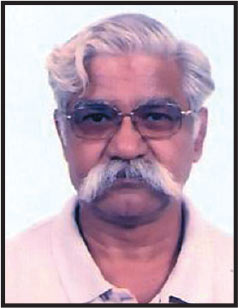 Malladi Rama Rao
Malladi Rama Rao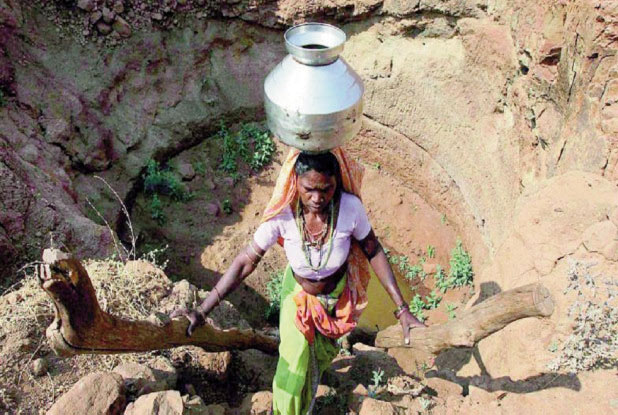 Representational Image
Representational Image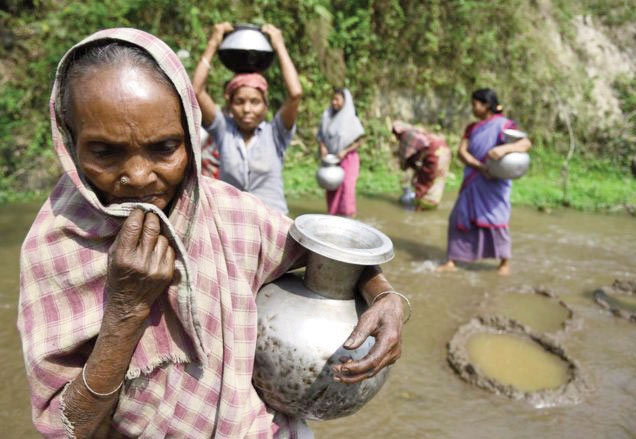 Thousands of Indians die each year as they have
Thousands of Indians die each year as they have 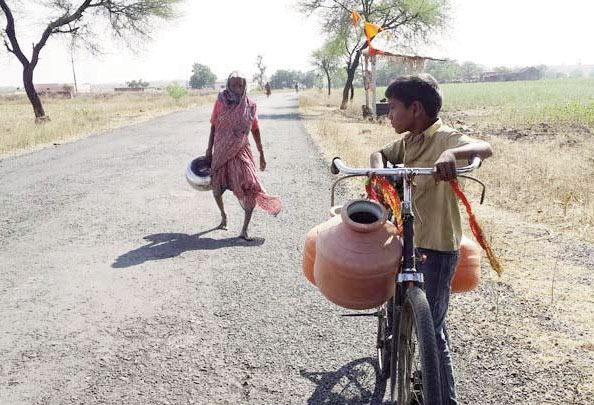 Many in thirsty Marathwada walk 14 km or more from their homes to
Many in thirsty Marathwada walk 14 km or more from their homes to 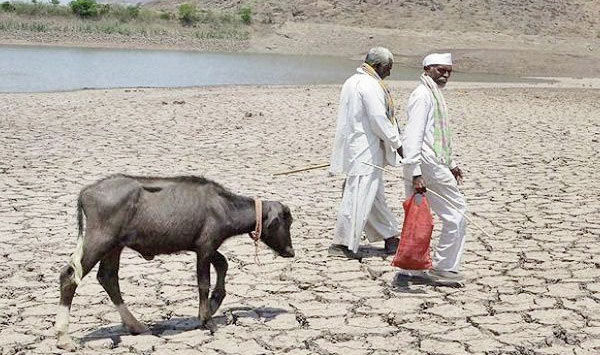 Mervewadi lake in Karad, Maharashtra | Photo Credit: PTI
Mervewadi lake in Karad, Maharashtra | Photo Credit: PTI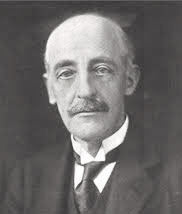 Gilbert Walker
Gilbert Walker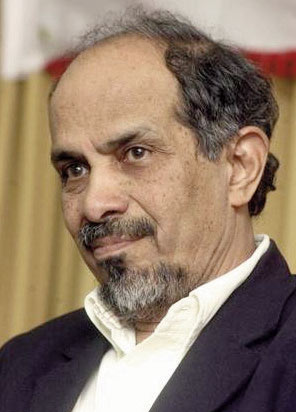 Prof Roddam Narasimha
Prof Roddam Narasimha